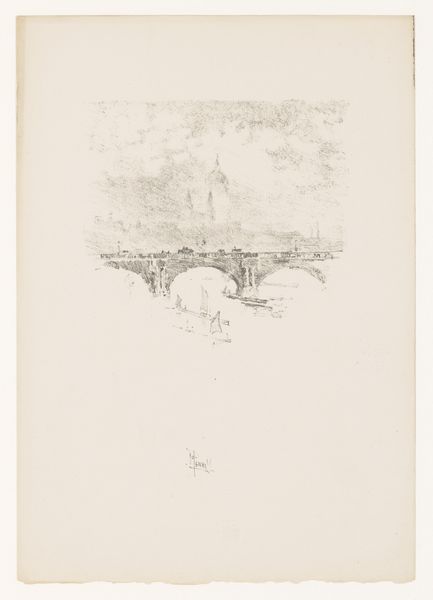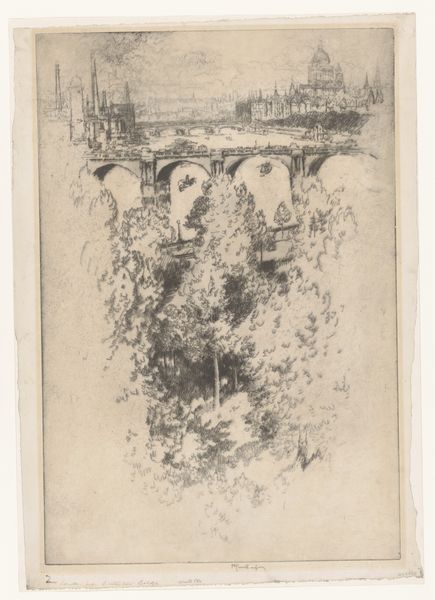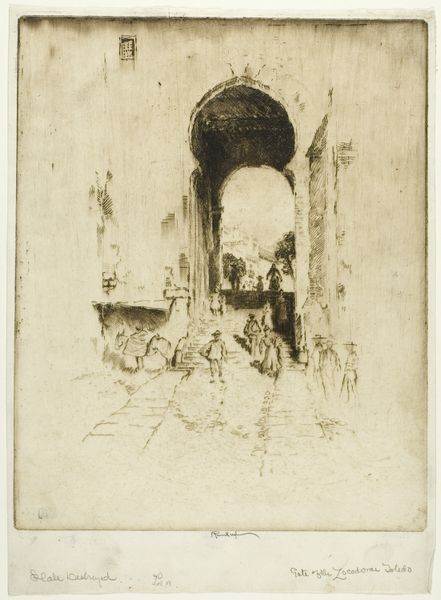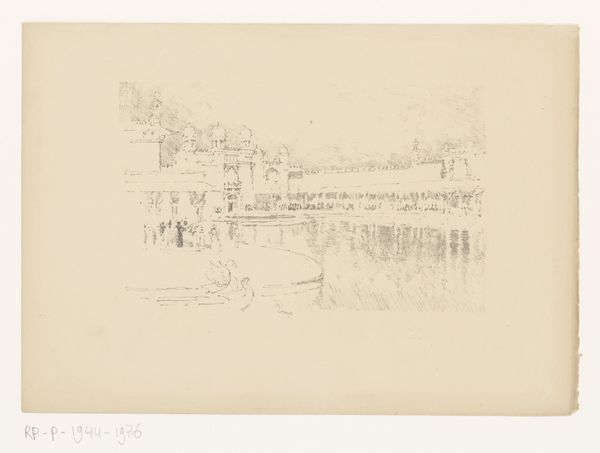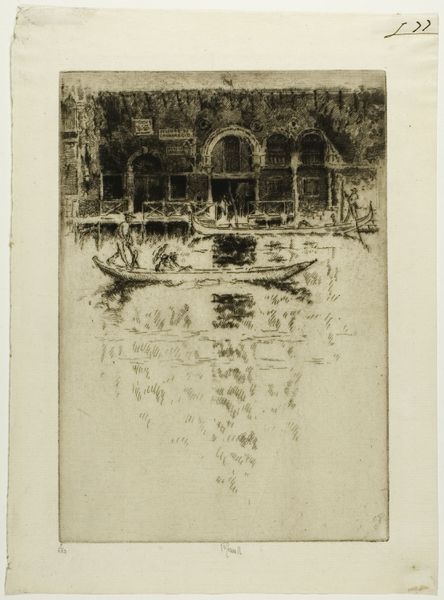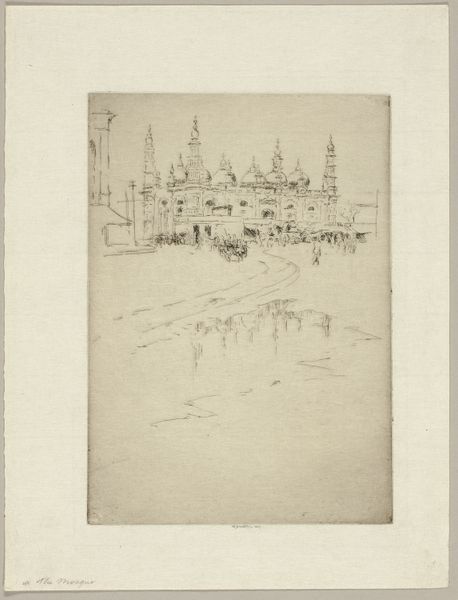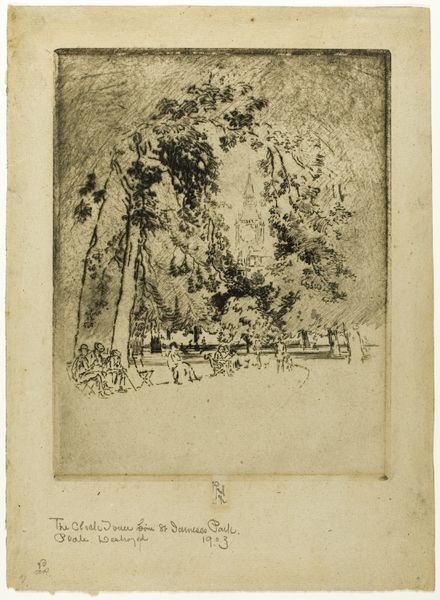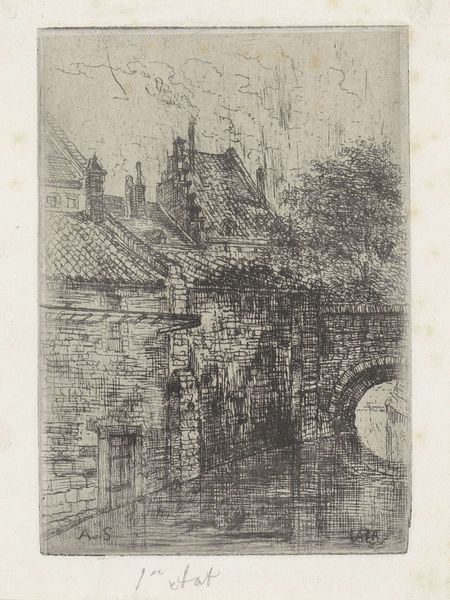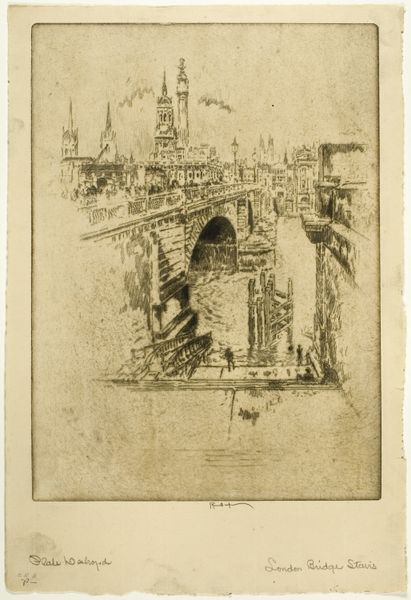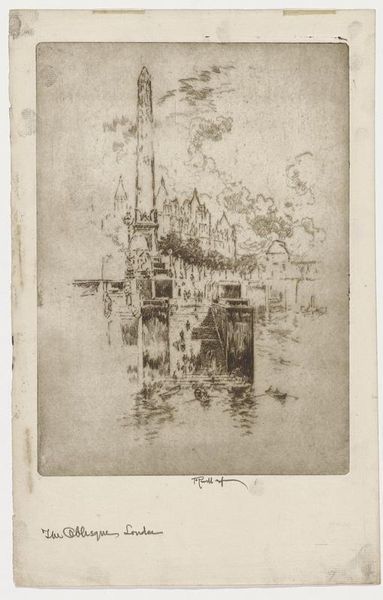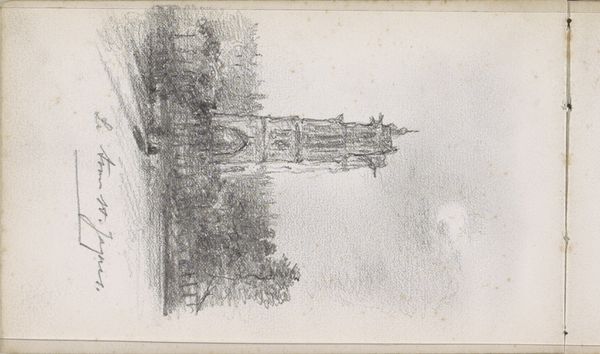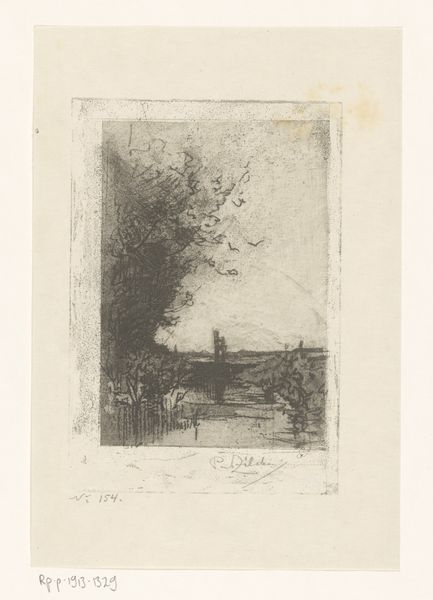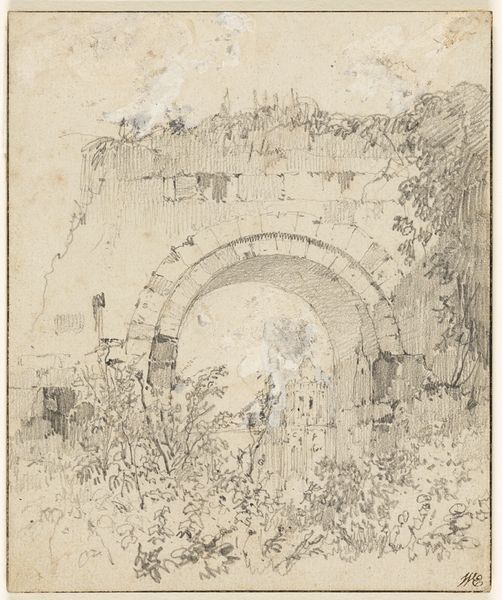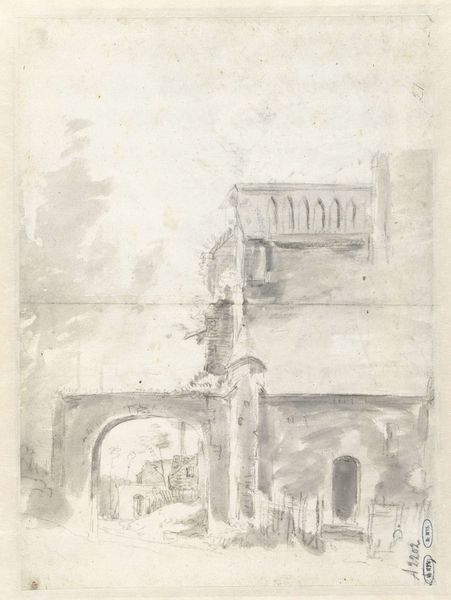
Dimensions: 452 × 304 mm (image); 504 × 403 (sheet)
Copyright: Public Domain
Editor: This is Joseph Pennell's "Over Waterloo Bridge, Church and Work," created around 1910. It's an etching on paper, a print. I’m struck by the contrast between the heavy industrial elements and the wispy trees. What's your take on this piece? Curator: Notice how Pennell uses etching to present a commentary on London's industrialization. The choice of etching, a readily reproducible medium, aligns with a broader availability of art, breaking from the elite patronage system. How does this medium, do you think, contribute to our understanding of labor and consumption in the cityscape depicted? Editor: I guess etching democratizes the image; it’s not a unique, precious painting only the wealthy could own. It can be widely circulated and consumed, just like the goods being produced by the industry in the background? Curator: Exactly! The visual language itself reflects a material reality. The bridge, churches and factory chimneys - elements of social production – become commodities visually consumed by the viewer, thus erasing lines between labor and leisure. Consider how he depicts these forms. Is the cathedral given same prominence as industry? What does that placement suggest? Editor: The factory is almost ghostlike but is taller than St. Paul's! So he is literally raising industry up. It is so much more prominent! Curator: Indeed. And the very labor involved in printmaking - the repetitive, almost mechanical act of etching - mirrors the industrialized labor that he represents. Could we consider the social implications of his work beyond its aesthetic value? How the conditions of making shapes meaning? Editor: So it's not just *what* is depicted but *how* it's made that gives us insight into the cultural values of the time, linking materials and class? Curator: Precisely! Considering the socio-economic dimensions deepens our insight into a work like this beyond surface aesthetic impressions. Editor: Thanks, I never thought about an artist’s technique carrying a cultural message too.
Comments
No comments
Be the first to comment and join the conversation on the ultimate creative platform.
